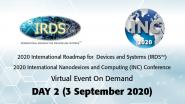Communication Systems
What Is a Communication System
A communication system is an integrated hardware model that defines the exchange of information between two stations – a transmitter and a receiver. The hardware can include data terminal hardware, transmissions equipment, tributary stations, relay stations, and so forth. It represents the various mediums signals rely on to move from source to destination.
The main components of a communication system are the transmitter, the communication channel, and the receiver. For a signal to be transmitted, it first goes through various phases, including signal representation, shaping, encoding, and modulation, before it passes to the transmission medium.
There are several ways of classifying a communication system depending on the physical infrastructure and signal specification. Here’s an overview of the various communication systems that exist.
Infrastructure-Based Classification
The two types of communication systems based on their physical infrastructure are – line (wired/bounded) systems and radio (wireless/unbounded) systems. Line communication systems have a physical link connecting the transmitter to the receiver and can be categorized as follows:
- Coaxial cable communication
- Optical fiber communication
- Parallel wire communication
- Twisted pair wire communication
Wireless systems have no physical links. Instead, signals are transmitted through space or the air. They can be classified as follows:
- Ground wave communication
- Satellite communication
- Skywave communication
- Space wave communication
Specification-Based Classification
Communication systems can also be classified based on their signal specification depending on:
- The nature of the baseband signal
- The nature of the transmitted signal
The two types of systems based on the nature of the baseband signal are:
- Analog communication systems
- Digital communication systems
Analog systems transmit data in the form of signals with varying amplitude and frequency. Digital systems represent the data in one of two states – 1 (high) or 0 (low). Data is transmitted in the form of 1s and 0s.
The two types of systems based on the nature of the transmitted signal are:
- Baseband communication systems
- Carrier communication systems
Baseband systems can be transmitted as they are without modulation. If they are transmitted with modulation, it is done via a carrier system.
Below is a list of the elements associated with a communication system.
- Signal – This refers to any time-varying voltage, current or electromagnetic wave that carries information. i.e. information is converted into an analog or digital signal
- Transmitter – This is the hardware used to send signals
- Transmission medium – This is the communication channel through which the signal travels
- Attenuation – This refers to the weakening of the signal as it travels through the transmission medium
- Amplitude – This refers to the signal’s strength
- Amplification – This refers to the process of using an electronic circuit to strengthen a signal’s amplitude
- Repeater – This is the device used to retransmit a signal. For example, a repeater might be used to boost the range of a transmission.
- Receiver – This is the hardware that receives signals
- Bandwidth – This can refer to the frequency range through which a signal is transmitted, or the amount of data being transmitted.
- Modulation – This is the process of embedding a message signal to a carrier wave
- Demodulation – This extracts the original message embedded in a signal
- Noise – This refers to signal interference
Examples of communication systems include:
- Internet
- Intranet and extranet
- Public Switched Telephone Network
- Television






















































































